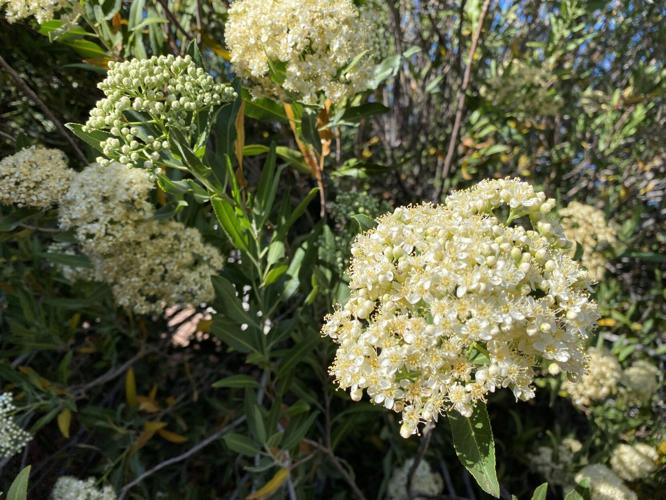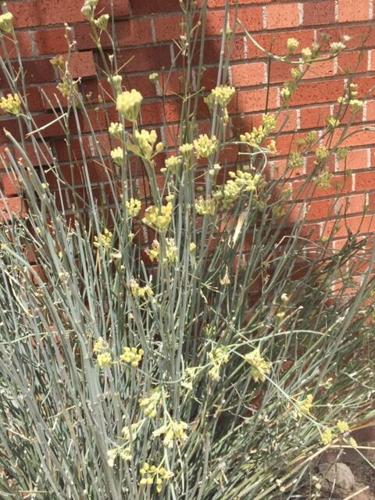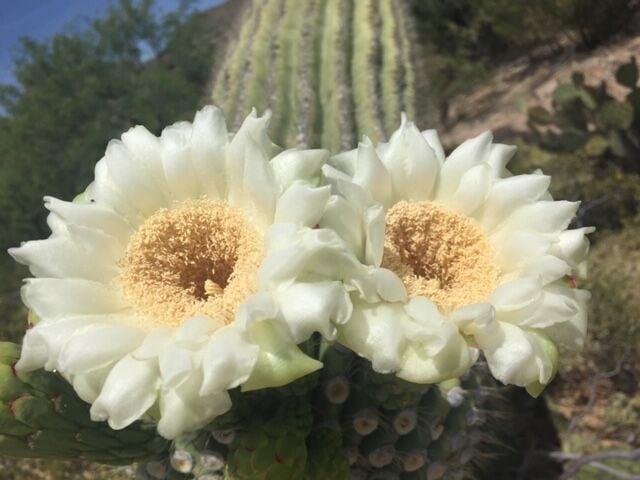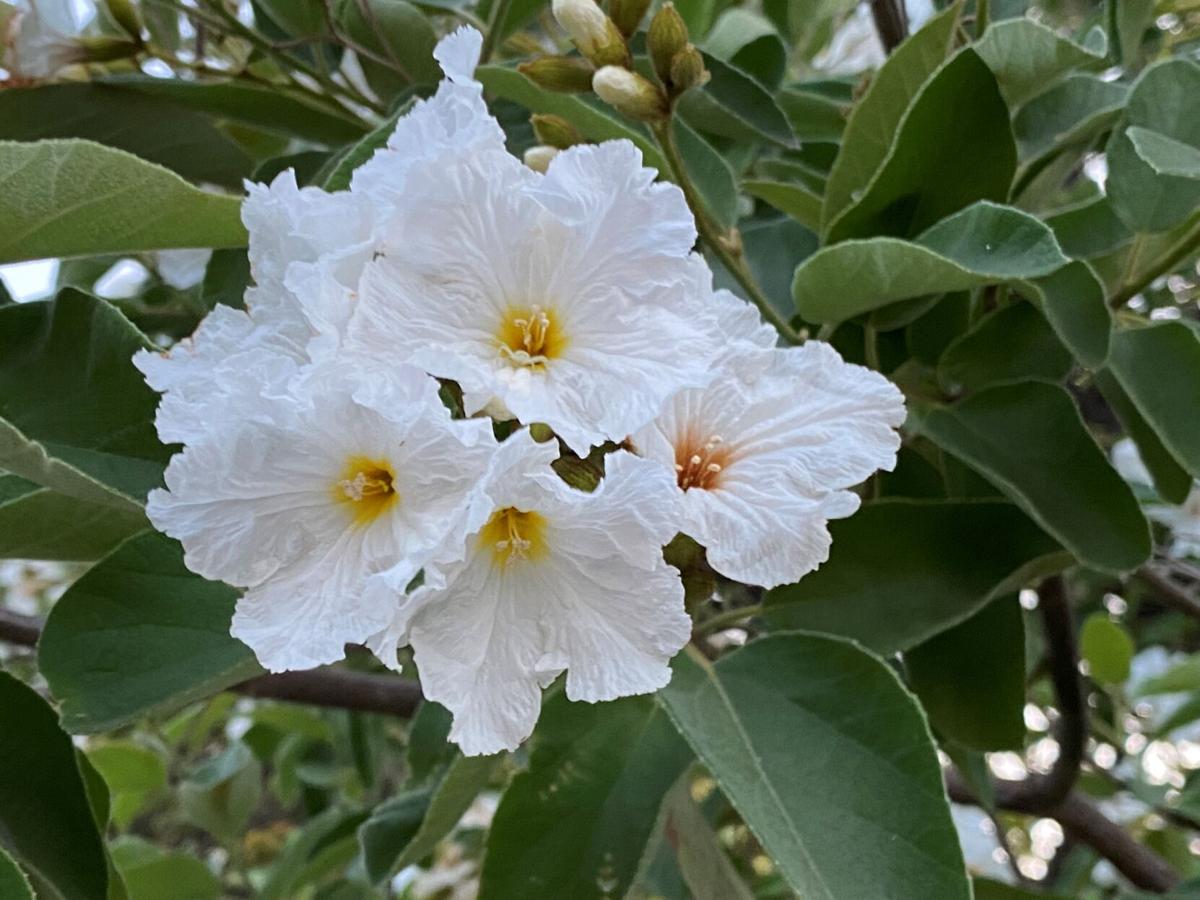As you no doubt noticed, many of our native plants have yellow flowers. However, a bit of variety can be pleasing to the eye.
Introducing white flowering plants into your color scheme can add variety, not only for you but for wildlife, as well. Many of our white flowering plants are great food sources for pollinators. From a design perspective, you may want to have a soothing white and green color palette featuring exclusively white flowers. Whatever your preference, there are quite a lot of white-flowering native and near-native plants to choose from. Here is a list of some of them.
Trees
Texas olive (Cordia boissieri) is a gorgeous mostly evergreen small near-native tree. It has beautiful white clusters of flowers and rounded deep green leaves.
Anacacho orchid tree (Bauhinia lunarioides) is a very underused tree that is native to the Sonoran and Chihuahuan deserts. It’s more like a large shrub but can be pruned as a small tree. The leaves are reminiscent of butterfly wings.
Kidneywood (Eysenhardtia orthocarpa) is another underused native plant. The tree grows up to 15 feet tall and has spikes of fragrant small white flowers that are great for pollinators.
Shrubs
Arizona rosewood (Vauquelinia californica) is one of my favorite native plants. It’s a slow-growing but gorgeous large shrub that can grow up to 15 feet tall. It’s a great habitat plant for native wildlife, especially birds.

The Arizona rosewood is a large native shrub with large white clusters of flowers and dark green foliage.
Beebrush (Aloysia gratissima) is a gorgeous, lacy bush that can grow quite tall but has delicate structure. The spikes of fragrant flowers attract pollinators, hence the name.
White desert plumbago (Plumbago scandens) is a native mid-size shrub that has lovely white flowers at the ends of long stalks. It’s roughly mounded in shape and grows about 3-4 feet tall and wide. It is quite drought tolerant and will flower more with less water.
Little leaf cordia (Cordia parvifolia) is a great mid-size native shrub with grey-green foliage and spectacular small snow-white flowers.

The little leaf cordia is a tough native thornless shrub that also looks beautiful in your landscape.
White Cloud Texas ranger (Leucophyllum frutescens ‘White Cloud’) is a hybrid variety of Texas ranger with beautiful snowy white flowers instead of the usual purple. The plant is native to the Chihuahuan desert. It usually grows about 5 feet tall and wide.
Smaller perennials
Blackfoot daisy (Melampodium leucanthum) is a great little native perennial that can flower from March to November. It loves rocky soils and lots of sun.
Tufted evening primrose (Oenothera caespitosa) may have a pinkish tinge or may be pure white. This is a great ground-level plant that attracts nighttime pollinators such as moths. It does well in part shade.
Flattop buckwheat (Eriogonum fasciculatum) can be pinkish or white in color. It’s a native perennial that grows around 3 feet tall and wide. It loves rocky sunny areas.

The spectacular sacred datura plant has 3-inch white flowers that attract night pollinators.
Sacred datura (Datura wrightii) is a native perennial, but usually dies back in winter and will reseed if it’s happy. It grows in our riparian areas, so it requires more water and is happiest in afternoon shade. Fragrant huge 2-3-inch flowers attract night pollinators. The plant is from the nightshade family and produces toxins.
Oreganillo (Aloysia wrightii) is a mid-size native shrub that can reach up to 6 feet in height. It needs sun and well-draining soils, although it will do fine with afternoon shade.
Gaura (Gaura lindheimeri) comes in pink and white varieties. It looks a bit untamed in the garden, and can grow about 2 feet wide by 1 foot tall. It’s great for pollinators.

Arizona wild cotton has beautiful creamy white flowers and deciduous foliage that turns red-orange in the fall.
Arizona wild cotton (Gossypium thurberi) is one of my favorite native plants, with beautiful dark green leaves and chalice-shaped white flowers. The foliage turns orange in the fall and drops.
Milkweeds
Arizona has at least 29 species of milkweeds native to our region, and quite a few of them have white flowers. You can plant these in clusters of five plants each, so that they’re easy to find for the insects. Spadefoot Nursery has an excellent guide to milkweeds in Southern Arizona. Many of our native milkweeds will reseed themselves in your garden. It is also easy to collect seeds from their pods. Here’s a selection of milkweeds with white flowers:
Arizona milkweed (Asclepias angustifolia) has beautiful flower clusters and thin almost needle-like foliage. It is a rare native plant found only in Arizona.
Pine needle milkweed (A. linaria) has leaves that resemble pine needles and can flower from spring through to fall. It’s very tough and will survive even in reflected heat.

Desert milkweed, also known as rush milkweed, has tall spiky gray stems and large white flowers.
Desert milkweed (A. subulata) is another very heat, sun and drought tolerant native plant that has great vertical form.
Horsetail milkweed (A. subverticillata) is another great plant for a pollinator garden. It thrives in poor soils and in sunny locations.
Succulents

Saguaro cacti have spectacular 3-4 inch white flowers with yellow centers.
Saguaro cacti (Carnegiea gigantea) are our iconic Sonoran desert plants and a keystone species in our ecosystem. This dramatic cactus also happens to have huge, gorgeous white blossoms.
Banana yucca (Yucca baccata) is one of our native yuccas that produces fruit which can be baked and tastes something like a mixture of applesauce and sweet potato. It also has spectacular white flowers that bloom on a stalk.
Soaptree yucca (Yucca elata) can grow to tree size with multiple branches. It also produces deep underground rhizomes. Flowers and buds are edible, and the roots and trunk produce saponins, hence the name. Flowers are on a tall stalk, and very fragrant.
This is a modal window.
The summer sizzle is in full swing, and with high temperatures comes the increased chance of heat-related illnesses.










